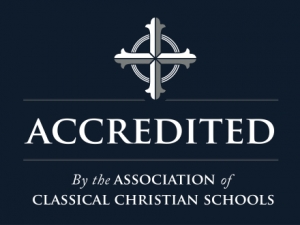February 7, 2011
Regents Daily News: February 7, 2011
Learning How to Learn
Implicit in Regents Academy’s mission is a critique of contemporary educational methods. Our school is self-consciously rejecting modern fads in education in favor of something far older and better tested: classical Christian education.
But what does it mean that Regents is a classical school? Many things, for certain. But one thing it means is that at our school students learn how to learn. Dorothy Sayers said it best in “The Lost Tools of Learning,” which was first delivered as a lecture at Oxford in 1947, and was then published by National Review in 1973. She said,
Is not the great defect of our education today – a defect traceable through all the disquieting symptoms of trouble that I have mentioned – that although we often succeed in teaching our pupils “subjects,” we fail lamentably on the whole in teaching them how to think: they learn everything, except the art of learning. It is as though we had taught a child, mechanically and by rule of thumb, to play “The Harmonious Blacksmith” upon the piano, but had never taught him the scale or how to read music; so that, having memorized “The Harmonious Blacksmith,” he still had not the faintest notion how to proceed from that to tackle “The Last Rose of Summer.” Why do I say, “as though”? In certain of the arts and crafts, we sometimes do precisely this-requiring a child to “express himself” in paint before we teach him how to handle the colors and the brush. There is a school of thought which believes this to be the right way to set about the job. But observe: it is not the way in which a trained craftsman will go about to teach himself a new medium. He, having learned by experience the best way to economize labor and take the thing by the right end, will start off by doodling about on an odd piece of material, in order to “give himself the feel of the tool.”
Let us now look at the mediaeval scheme of education – the syllabus of the Schools. It does not matter, for the moment, whether it was devised for small children or for older students, or how long people were supposed to take over it. What matters is the light it throws upon what the men of the Middle Ages supposed to be the object and the right order of the educative process.
The syllabus was divided into two parts: the Trivium and Quadrivium. The second part – the Quadrivium – consisted of “subjects,” and need not for the moment concern us. The interesting thing for us is the composition of the Trivium, which preceded the Quadrivium and was the preliminary discipline for it. It consisted of three parts: Grammar, Dialectic, and Rhetoric, in that order.
Now the first thing we notice is that two at any rate of these “subjects” are not what we should call “subjects” at all: they are only methods of dealing with subjects. Grammar, indeed, is a “subject” in the sense that it does mean definitely learning a language – at that period it meant learning Latin. But language itself is simply the medium in which thought is expressed. The whole of the Trivium was, in fact, intended to teach the pupil the proper use of the tools of learning, before he began to apply them to “subjects” at all. First, he learned a language; not just how to order a meal in a foreign language, but the structure of a language, and hence of language itself – what it was, how it was put together, and how it worked. Secondly, he learned how to use language; how to define his terms and make accurate statements; how to construct an argument and how to detect fallacies in argument. Dialectic, that is to say, embraced Logic and Disputation. Thirdly, he learned to express himself in language – how to say what he had to say elegantly and persuasively.
Mrs. Sayers did us a great service when she showed us how Grammar, Logic (or Dialectic), and Rhetoric grant students the tools of learning that can be applied to any discipline. This is an apt description of what we are about as a school.
Let me encourage you to go online and read Dorothy Sayers’ complete essay, “The Lost Tools of Learning.” You can read the entire lecture that has made such a critical difference in classical Christian education today.


